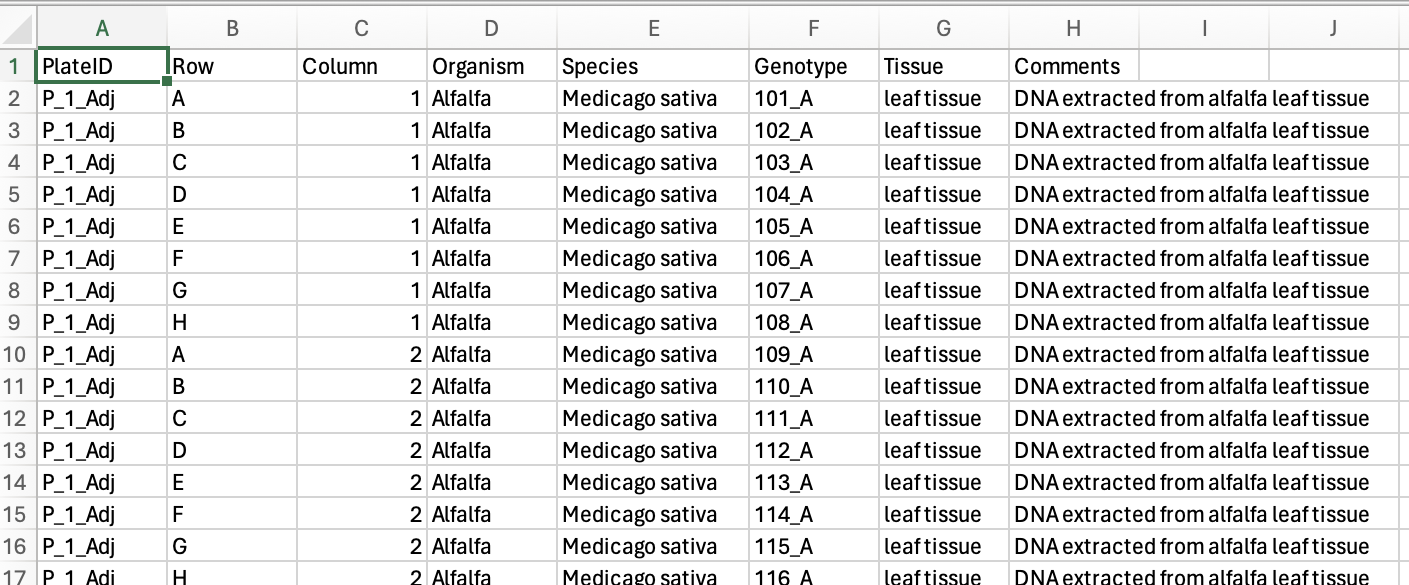The sample tracking file is a very important document that must be included with your sample submission to DArT. It can be a very finicky document and it only allows certain characters in certain places. The good news is that BI staff is well equipped to help you create and format this document successfully. Review the following information about the Sample Tracking File to learn more about what information your BI Coordinator will need from you in order to create this important document before you ship your samples. Feel free to contact us at bi-genotyping@cornell.edu if you have any questions during this process.
Step 2: Filling out the Sample Tracking File

Things to keep in mind for your samples.
You can only include one type of sample submission in your project. (ie: only leaves or only fin clips)
You can only include one kind of species in your project. If you plan to use a different species, that will require a different project.
The kinds of tissue that you can send are: blood, bud, ear, feather, fin clip, hair, insect head, insect leg, leaf, liver, root seed, sporophyte, tail, whole insect, meristem, muscle, scat, seedling, swab, and toe.
Information to include in the sample tracking file
There are several details that will be included in your tracking file for your plate samples. The required ones are:
Plate ID: Name of the plate
Row: Row on the well plate
Column: Column on the well plate
Organism: Chosen organism to sample (should be the same organism throughout)
Species: Organism species (should be the same species throughout)
Tissue: Tissue/sample type (Can only be one of the following: blood, bud, ear, feather, fin clip, hair, insect head, insect leg, leaf, liver, root seed, sporophyte, tail, whole insect, meristem, muscle, scat, seedling, swab, and toe.)
Optional information:
Comments (optional for you to add if you’d like). This could be a breeding program specific identifier you’d like to match with the sample tracking file names that DArT requires for sample submission.
How to complete a sample tracking file.
#1: Getting Started
Discuss your project in detail with your BI Coordinator. They will collect information from you so that BI can best assist you in completing your genotyping project.
#2: Get your sample tracking file
You can get your sample tracking file one of three ways.
- From your BI Coordinator.
- From Rebecca Cubitt, Breeding Support Specialist at BI.
- Or directly from the DArT website. To use this option, you will need to create a username and password on DArT website.
#3: Fill out the sample tracking file
Watch our short video on how to file out the sample tracking file and match it with your sample plate.




